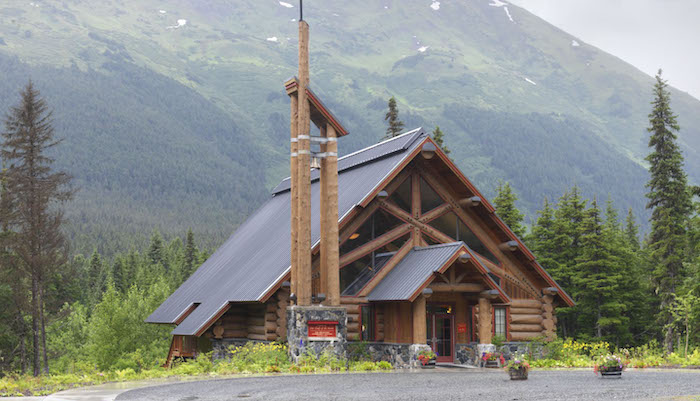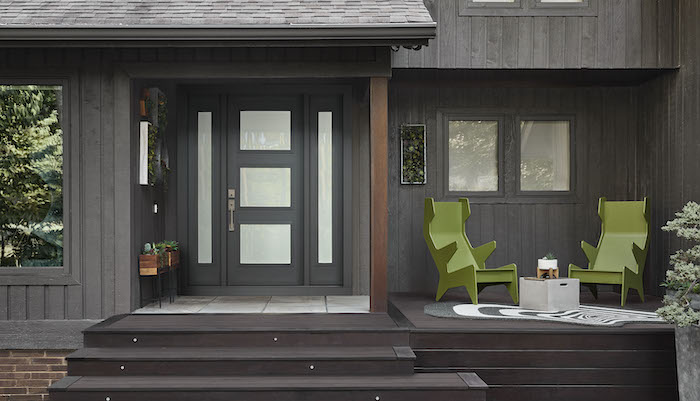From an Alaskan church to university, wood windows are being used with products from other industries to achieve important building goals.
Explore three case studies spotlighting how owners of very different properties with very different goals are partnering with JELD-WEN to rethink how their windows can contribute to everything from energy efficiency to cost savings.Complete the form below to read more.
Over the last four months, we’ve explored a range of real-world design challenges related to wood windows. We’ve also shared how those hurdles were successfully—and beautifully—overcome. In case you haven’t seen the previous installments, be sure to check them out. The first talked about “Replacing Historic Windows,” the second took a look at custom-built fabricated windows, and the third focused on using wood windows to enhance views.
In the fourth and final part of the series we will address how windows can be modified to incorporate products from related industries to improve the performance of a building. We’ll spotlight three examples, from an Alaskan chapel to a university, all of which delivered outstanding results. Maybe these success stories will inspire some ideas for your next project.
1. Clarke Hall – Regis University
Regis University is a private Jesuit university located in Denver, Colorado. In a previous building project on campus, problems arose with the HVAC system when students kept leaving windows open. That necessitated retrofitting the windows with sensors so that if more than two windows were open in a zone, the air conditioning in that zone would shut off. The update would keep the AC system from running virtually nonstop, saving the university money in the process. Unfortunately, the installation of the sensors caused the window seals to fail, voiding their warranty.

Working with JELD-WEN, Regis University found an innovative way to integrate sensors into the windows of its Clarke Hall without violating the windows’ warranty.
A similar project was planned for Clarke Hall, a 75,000-square-foot, four-story, state-of-the-art facility that houses conference rooms, classrooms, and a new cafe with dining events area. This time, the warranty issue was identified early in the planning. The project managers worked with the architect to find a sensor that met their needs and also worked for the JELD-WEN windows. The windows were prepped at the plant, and then the sensors were screwed in on-site, with a little hole being drilled to run the low-voltage wire.
Working together, the university and JELD-WEN matched up the sensors and the windows in a way that delivered the desired functionality—without voiding the warranty.
2. Denali National Park Visitor Center
In this third example, the US National Park Service (NPS) wanted to incorporate photovoltaic (PV) panels in the window frames at the Denali National Park Visitor Center in Alaska. The goal was to achieve a LEED Silver rating, which would make it one of the first buildings of the NPS to undertake that process.
The challenge involved the proposed location of the PV panels: the roof. Seeking to install them on the roof of the building generated concerns that the building is only used seasonally, which meant that snow load could be an issue when no one was present. A new idea was developed: what if JELD-WEN put PV panels in the building’s window frames instead?

The US National Park Service turned to JELD-WEN to help figure out how it could incorporate PV panels for a sought-after LEED Silver rating.
It proved a viable solution and the windows were built without the insulated glass being installed. The end result was a PV panel and a clad wood window frame, representing an innovative approach that ultimately helped the NPS achieve the LEED Silver rating at its Denali location.
3. Chapel of Our Lady of the Snows
This final case study illustrates an especially unusual application of custom windows and the use of related products. The Chapel of Our Lady of the Snows sits at the base of the Mount Alyeska ski area in Girdwood, Alaska. The church wanted to exit the strip mall it had been using as its meeting place. So the operators asked the Alyeska Resort to donate a piece of land near one of the property’s parking lots. A community center also became part of the project as did a local Church of Latter-Day Saints.
 A blend of high-tech wood and computerized construction methods helped the architect of an Alaskan church turn their vision into a reality.
A blend of high-tech wood and computerized construction methods helped the architect of an Alaskan church turn their vision into a reality.
The project didn’t come without challenges, including fitting the window glass into a massive log truss structure. That meant that JELD-WEN would need to glaze the three log trusses that create the structure of the building. Though the trusses look identical, each log is unique. Two by six bucks are routed into each of the logs, and that buck is free floating so the logs can dry and move without putting stress on the widow units.
The next challenge was getting the windows to fit perfectly. JELD-WEN came up with the idea of making full-size templates, which were then repeatedly fitted into the space until an exact fit was achieved. The windows were built from those templates. The combination of high-tech wood and modern computerized construction methods made all the difference for the architect of the new Chapel of Our Lady of the Snows.
The performance possibilities of wood windows
Challenges that would previously put project on hold, or over budget, are now overcome using state-of-the-art technology along with wood that is resistant to rot, insects, bowing, and flexing. Invite your clients to free their imagination, sketch something up, and then bring it to your JELD-WEN® window rep. Chances are good it’s possible.
Windows for any need from JELD-WEN
The JELD-WEN® wood window offerings are designed to durably fit most everywhere. They are also available with AuraLast® pine, ensuring that they will withstand rot, termites, and water damage. See all of the JELD-WEN® window offerings.
LEED® is a trademark of US Green Building Council. Use only with rights.



